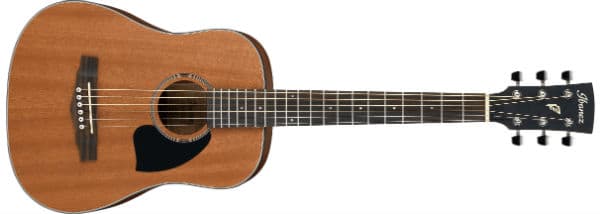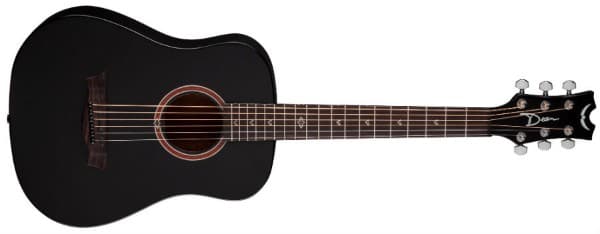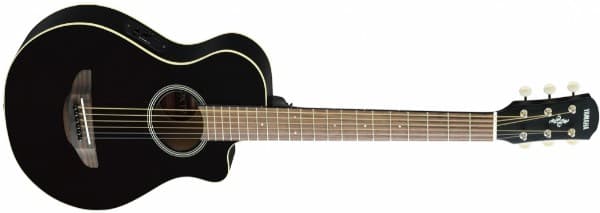OK, dear friends, it’s been a little while. But, the honeymoon is over, so it’s back to business. However, my honeymoon did involve some time on the beach. It made me think of recording stuff in the great outdoors over the summer.
I talk enough about the compact recording rig to not need to dwell on it. We know it fits in a bag. But what instruments are best to take with you if you want to turn the beach or park into your studio?
I love my Taylor TSBTe, and I’ll use that, but it seems to be discontinued. So, let me find some considerations for you!
What makes a good summer guitar?
This is probably super-subjective, but, for me, I’d distil it down to these points:
- Small: whether you’re driving to the beach or taking a bus to the park, smaller bodied guitars are just easier to transport in cars or public transport; to this end, I’ll look at 3/4 sized guitars
- Acoustic: following on from that, I’ll just look at acoustic guitars, because electric guitars mean you’ll need to bring an amp
- Affordable: let’s face it, you increase the risk of damage by bringing it to the great outdoors, so you don’t want something fancy and expensive getting wrecked; let’s keep things under US$200, OK?
- Versatile: following on from the last two points, and the premise of light audio recording, you want your summer guitar to be able to do everything – power chords, open chords, barre chords… maybe even some solos?
While I normally like to work with a guitar’s natural tones, and accentuate it with what I play, in this case, we want something that relies more on what I play
I’ll cover a range of budgets.
Disclaimer: none of these products were used or tested by Light Audio Recording. This post intends to collate appropriate products based on similar criteria, that could be considered for compact and affordable recording.
Ibanez PF2MH – US$129.99 new

Although best known for superstrats like their RG series, Ibanez have a respectable line of affordable acoustics.
The PF2MH has a catchy name, and 3/4 sized. So it checks the box regarding size. It’s also $130. It’s hard to go wrong with that for a brand new guitar.
Ibanez have always made great instruments. But, they became more into their own company. And now, they’re a beacon for high-quality guitars from the east.
As you can imagine, at this price, the PF2MH is very much a no-frills affair. It has dot markers on the fingerboard, Ibanez’s own-brand hardware, and a plain black pickguard. The rosette is a plain black and white affair.
The PF2MH’s body is sapele, which is a variety of mahogany. The fingerboard is nandu.
You can be sure the PF2MH is well-constructed. But, at this price, don’t expect it to sing by itself. This will have a well-rounded sound. If it was bigger, it would be quite bassy, but that’s offset by its smaller size. But, it won’t give the most bright and beautiful sound.
In saying that, that’s exactly why it might be good for recording. Depending on what you play, it should do almost anything relatively well.
At the beach, this is right on for singalongs by the fire.
It might be important to note that it doesn’t include a gig bag. So maybe try find a deal that includes one, or be sure to pick up a cheap one when you’re buying.
Dean Flight – US$169 new

Have I mentioned that I’m a big fan of my Dean USA Z? Anyway, although best known for pointy things, they have a relatively well-respected range of acoustic instruments.
Seriously, they have banjos and ukuleles and resonators and everything!
But for now, we’re looking at their 3/4 sized acoustic, which they call the Flight.
The Flight is a slightly frillier affair than the PF2MH. But somehow, that frilliness doesn’t compromise the darkness and metal of the Dean brand.
I guess that comes down to the aesthetics embellishments they’ve allowed. Check out the inlays on the fingerboard. And what about that crimson red rosette? Oh. And I guess that fact that it’s black.
In saying that, Dean have very much designed this for musicians with a get-up-and-go mindset. The look makes it Dean, but the parts and construction make it ideal for summer road trips.
The body and neck is mahogany all over, and the fingerboard is walnut. It comes with a Graph Tech nut. They’re made of some kind of witchcraft, and designed to reduce string breakages.
If you opt for the black model, remember it will attract that summer sun, so make sure you leave it in its gig bag – one is included. Otherwise, this’ll be warped by the end of the summer.
In terms of tone, the mahogany will give this a nice loud, dense sound. It might sound a little woofy, but a set of light strings will help balance things out.
Luna Safari Peace – US$189 new

This guitar will not appeal to everyone.
Now that statement of the obvious is out of the way, let’s talk about this guitar.
If the Flight is too metal for you, perhaps this version of Luna’s Safari will appeal to the absolute furthest end of the spectrum away from it.
Dean and Luna are owned by the same parent company, Armadillo Enterprises.
Anyway, this is very ornate, and I’m not sure it’s my bag. But, if you’re on your summer excursions, looking to catch people’s eye, this will certainly do the job!
The body is mahogany, while that fancy top is spruce. So, probably the most traditional thing about the guitar! The fingerboard is walnut.
Initially, I was intrigued that they didn’t have equally fancy fret markers. But, on reflection, I’m glad they didn’t. It would have been overkill.
Obviously, in terms of recording, my usual mic placement is unlikely to be as effective with that sound hole. But, I’d definitely love to take some time to figure it out!
Also, the Safari Peace comes with a gig bag. I don’t think it’s tie-dye, but it definitely should be.
Yamaha APXT2 – US$199.99 new

Finally, towing the line of our $200 limit, is the Yamaha APXT2.
There are a few reasons why this is a little pricier than the other models on our listicle, and none of them are to do with size.
Yamaha are one of the top brands in the world for budget guitars, especially ones aimed at beginners. The APXT2 is a scaled down version of their super popular APX500III.
Firstly, this is a thinline guitar. That just means it’s slightly slimmer than usual.
Secondly, it’s got onboard electronics – a pickup and a tuner. You can plug this in!
This adds to the versatility of the guitar. As well as being able to shove a mic in front of it for your summer sessions, you can also plug in to play some shows along the way.
If you romanticize about hitting the road, recording and playing shows, but you have a financial and spacial budget, this is probably what you need.
Now, the APXT2 is a little unusual, because Yamaha doesn’t claim a fixed species of wood for its body: their website says they use whatever’s available. However, I’d guess that it’s still some kind of mahogany species, or something very similar.
It definitely comes with a rosewood fingerboard though. But we’ll see how long that continues. And the top is always made from spruce, apprently.
It’s very unlikely that you’ll be able to fault the build quality of a Yamaha. In terms of tone, you can expect something a little brighter than some of the other instruments on the list. Perfect for a light and breezy summer sound!
Best Guitars for Summer Recording Sessions: conclusion
And there you have it. Whether you’re recording in the park, leading the singalong by the campfire, or roadtripping across acoustic nights, this list should give you an idea of what’s out there for you!
Have fun!
If you found this helpful, subscribe on the right hand side of this page. You’ll be notified of new posts on Thursdays, inspiring you going into the weekend.
Share your own light audio recording thoughts and experiences! There’s a Facebook group, a Subreddit, Twitter and Instagram.
Also, feel free to shoot me a coffee!
